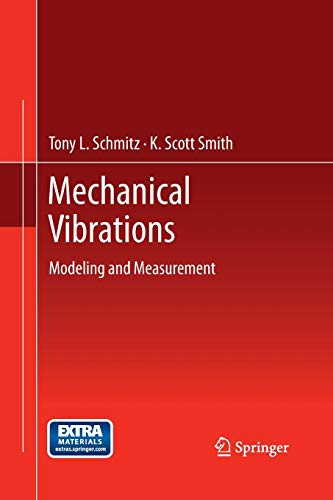For a single degree of freedom spring-mass-damper system subject to forced harmonic vibration with (m=1 mathrm{~kg}, k=1
Question:
For a single degree of freedom spring-mass-damper system subject to forced harmonic vibration with \(m=1 \mathrm{~kg}, k=1 \times 10^{6} \mathrm{~N} / \mathrm{m}\), and \(c=120 \mathrm{~N}-\mathrm{s} / \mathrm{m}\), complete the following.
(a) Calculate the damping ratio.
(b) Write expressions for the real part, imaginary part, magnitude, and phase of the system frequency response function (FRF). These expressions should be written as a function of the frequency ratio, \(r\), stiffness, \(k\), and damping ratio, \(\zeta\).
(c) Plot the real part (in \(\mathrm{m} / \mathrm{N}\) ), imaginary part (in \(\mathrm{m} / \mathrm{N}\) ), magnitude (in \(\mathrm{m} / \mathrm{N}\) ), and phase (in deg) of the system frequency response function (FRF) as a function of the frequency ratio, \(r\). Use a range of 0 to 2 for \(r\) (note that \(r=1\) is the resonant frequency). [Hint: for the phase plot, try using the МАTLAB \({ }^{\circledR}\) \(\operatorname{atan} 2\) function. It considers the quadrant dependence of the \(\tan ^{-1}\) function.]
Step by Step Answer:

Mechanical Vibrations Modeling And Measurement
ISBN: 119669
1st Edition
Authors: Tony L. Schmitz , K. Scott Smith




